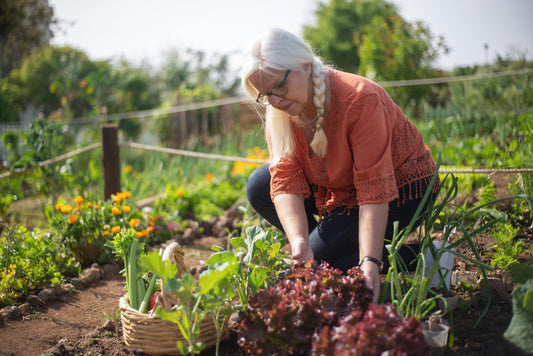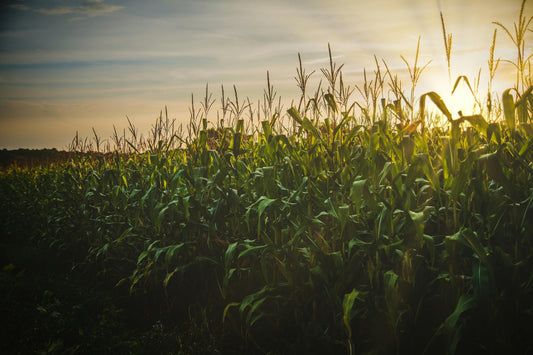California's diverse soil conditions, from clay-heavy San Francisco Bay soils to sandy Central Valley profiles, require precise testing to meet Water Efficient Landscape Ordinance requirements. Understanding your local soil properties is essential for creating compliant, water-efficient landscapes that thrive in California's Mediterranean climate.
How Soil Testing Ensures WELO Compliance for Water-Efficient Landscaping
Soil testing is the foundation of WELO compliance, providing essential data on soil composition, water infiltration rates, and nutrient levels that directly inform irrigation system design and plant selection for maximum water efficiency.
Decoding the Water Efficient Landscape Ordinance (WELO)
The Water Efficient Landscape Ordinance applies to new constructions, rehabilitated landscapes over 500 square feet, and certain renovations across California. Local agencies must adopt, implement, and enforce the MWELO or a local Water Efficient Landscape Ordinance that is at least as effective as the MWELO, with the primary goal of reducing landscape water consumption while maintaining environmental quality.
The ordinance establishes requirements for compost incorporation at four cubic yards per 1,000 square feet, mulch application, and limits on turf area to 25% of landscape area. These requirements create landscapes that use significantly less water than traditional designs, supporting California's broader water conservation goals.
Why Soil Testing is Essential for WELO
Soil testing provides critical data that enables tailored landscaping approaches, minimizing water waste while ensuring plant health. The key contributions of soil testing to WELO compliance include understanding soil composition, measuring water infiltration rates, optimizing irrigation systems, and ensuring plant-soil compatibility.
- Soil Composition Insights: Testing reveals crucial texture ratios, organic matter content, and nutrient levels. Soil surveys identify soil properties and characteristics that affect land use, including seasonal wetness, depth to bedrock, and other factors that influence irrigation needs.
- Water Infiltration Assessment: Different soil types have varying infiltration rates - sandy soils may have high infiltration rates requiring drip irrigation to prevent deep percolation, while clay soils with low infiltration rates need slow water application to prevent runoff.
- Irrigation System Optimization: Soil moisture measurements help agricultural managers maximize irrigation efficiency, with proper monitoring preventing both overwatering and plant stress.
- Plant Selection Guidance: Soil surveys describe soil properties that affect plant growth and include interpretations to help determine what to plant and where, supporting water-efficient plant selection.
These insights ensure landscapes meet WELO's water budget requirements while promoting healthy plant establishment and long-term sustainability.
Soil Testing Methods for WELO Compliance
Effective soil assessment for WELO compliance requires combining laboratory analysis with field testing methods to provide comprehensive site characterization.
Laboratory Soil Analysis
Professional laboratory testing should analyze samples collected at 0-6 inches depth across the site. SSURGO data includes information about available water capacity, soil reaction, electrical conductivity, and other properties essential for irrigation planning. Key parameters include soil texture percentages, pH levels (target 6.0-7.5 for optimal plant performance), organic matter content, and nutrient availability.
On-Site Field Assessments
Simple field tests complement laboratory analysis and provide immediate site-specific information. The ribbon test helps determine soil texture by assessing how soil particles bind together when moistened. Infiltration testing using ring infiltrometers measures how quickly water penetrates soil, which is crucial for irrigation system design.
Best Practices: Sample randomly across sites using clean tools to avoid contamination. The Web Soil Survey provides agricultural producers and others with electronic access to soil information needed to make land-use and management decisions, offering valuable baseline data to complement on-site testing.
Implications for Water-Efficient Landscaping
Integrating comprehensive soil testing into WELO-compliant landscape design delivers measurable benefits for water conservation, plant health, and environmental protection.
- Water Conservation: Soil health management practices can increase infiltration and soil water storage, potentially reducing irrigation needs during spring and reducing runoff from flood irrigation events.
- Enhanced Plant Performance: Soil amendments improve water retention, permeability, drainage, aeration, and structure, providing a better environment for plant roots.
- Environmental Benefits: Proper soil management reduces erosion and protects water quality. NRCS-developed nutrient management plans, cover crops, and buffers keep soil and nutrients in place and filter runoff water.
These outcomes align with California's water conservation goals while creating resilient landscapes that perform well under varying climate conditions.
Practical Steps for WELO Soil Testing
Landscape professionals can implement systematic approaches to leverage soil testing for successful WELO compliance:
- Site Assessment and Mapping: Divide sites into representative zones based on observed soil variability, topography, and intended use. Sample 1-2 points per 1,000 square feet for adequate site characterization.
- Testing Timeline: Conduct initial testing during the design phase and follow-up testing post-installation to monitor soil changes and system performance.
- Data Integration for Design: Use soil test results to select appropriate native and climate-adapted plants while adjusting irrigation schedules based on soil water-holding capacity and infiltration rates.
- Soil Amendments: Adding approved compost at a rate of four cubic yards per 1,000 square feet can improve soil structure, water retention, and nutrient availability. Research shows significant increases in soil aggregate stability and water infiltration rates with compost applications.
Conclusion
Soil testing serves as the foundation of effective WELO compliance, enabling the creation of water-efficient landscapes that conserve precious water resources while supporting healthy plant communities. By providing detailed information about soil composition, water dynamics, and nutrient availability, comprehensive soil assessment allows landscape professionals to optimize irrigation systems, select appropriate plants, and meet regulatory requirements.
The integration of laboratory analysis with field testing methods ensures thorough site characterization, while proper soil amendments enhance water retention and infiltration. As NRCS soil surveys demonstrate, understanding soil properties is essential for making informed land-use decisions, particularly in California's diverse geological and climatic conditions.
For landscape professionals and property owners seeking WELO compliance, investing in thorough soil testing represents both a regulatory requirement and an opportunity to create sustainable, water-efficient landscapes that benefit the environment and reduce long-term maintenance costs.
Sources
- California Department of Water Resources. Model Water Efficient Landscape Ordinance. https://water.ca.gov/Programs/Water-Use-And-Efficiency/Urban-Water-Use-Efficiency/Model-Water-Efficient-Landscape-Ordinance
- County of San Mateo. Water Efficient Landscape Ordinance (WELO). https://www.smcgov.org/planning/water-efficient-landscape-ordinance-welo
- USDA Natural Resources Conservation Service. Soil Survey. https://www.nrcs.usda.gov/conservation-basics/natural-resource-concerns/soil/soil-survey
- USDA Natural Resources Conservation Service. Web Soil Survey. https://www.nrcs.usda.gov/resources/data-and-reports/web-soil-survey
- USDA Natural Resources Conservation Service. Soil Surveys Can Help You. https://www.nrcs.usda.gov/conservation-basics/natural-resource-concerns/soil/soil-surveys-can-help-you
- USDA Natural Resources Conservation Service. Soil Survey Geographic Database (SSURGO). https://www.nrcs.usda.gov/resources/data-and-reports/soil-survey-geographic-database-ssurgo
- USDA Natural Resources Conservation Service. Irrigation and Water Management. https://www.nrcs.usda.gov/getting-assistance/other-topics/organic/nrcs-assistance-for-organic-farmers/irrigation-and-water-management
- UC Agriculture and Natural Resources. Compost & Other Soil Amendments. https://ucanr.edu/site/uc-marin-master-gardeners/compost-other-soil-amendments
- University of Massachusetts Extension. Measuring Soil Moisture. https://ag.umass.edu/fact-sheets/measuring-soil-moisture
- Alluvial Soil Lab. Enhancing Landscape Irrigation Efficiency: Matching Systems to Soil Infiltration Rates. https://alluvialsoillab.com/blogs/soil-facts-3/enhancing-landscape-irrigation-efficiency-matching-systems-to-soil-infiltration-rates
- UC Press Elementa. How does building healthy soils impact sustainable use of water resources in irrigated agriculture? https://online.ucpress.edu/elementa/article/10/1/00043/194830/How-does-building-healthy-soils-impact-sustainable
- Denver Water. Soil Amendment Program. https://www.denverwater.org/contractors/construction-information/soil-amendment-program
- UC Davis Agricultural Sustainability Institute. Soil Health Research. https://asi.ucdavis.edu/programs/ce/research/soil-health












